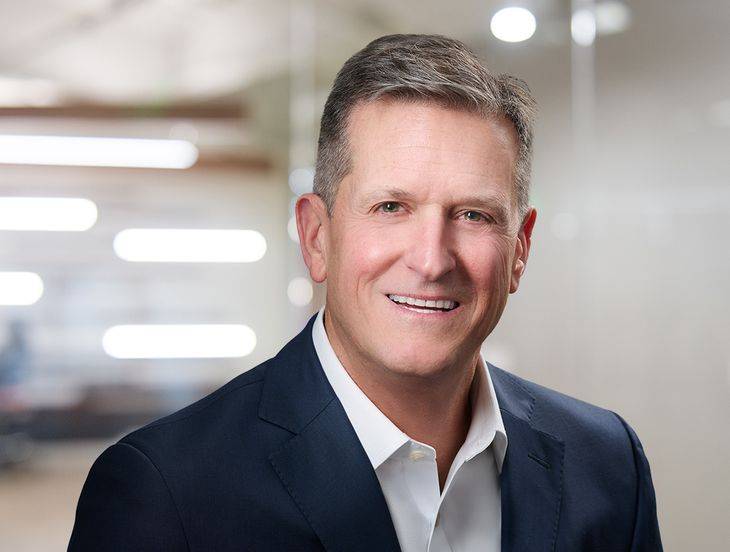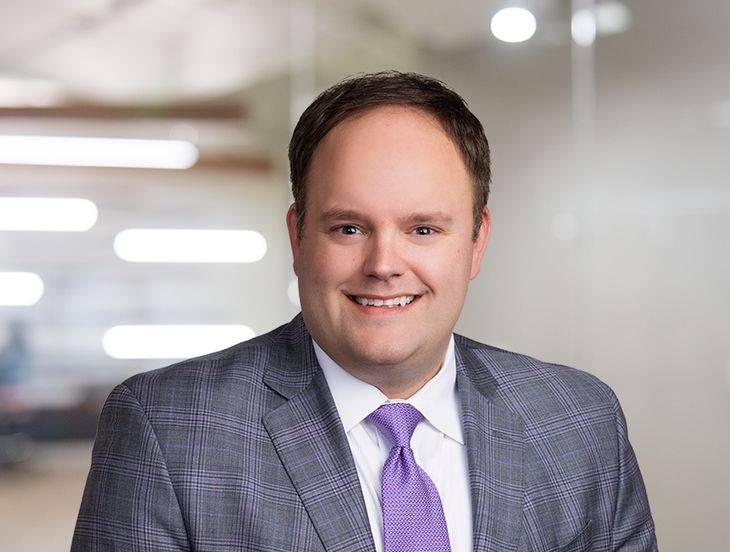Top 10 Workplace Law Developments To Expect Under President Trump
Insights
11.06.24
Now that we know Donald Trump will return to the White House as President, it’s time for employers to take a look at what they might expect during his second term in office. We have gathered insights from some of our firm’s key thought leaders to provide their perspective on what President Trump will aim to accomplish when it comes to workplace law – and what employers can do to prepare.
Quick Word on What to Expect in D.C.
While Republicans will control the White House and the Senate, we’ll likely remain unsure which party will control the House for several more days or weeks. Regardless of which side prevails, that party will hold the House by a razor-thin majority, making major and controversial legislation unlikely. Even if the Republicans hold the House, their narrow majority will be a barrier to enacting anything that peels away even a handful of moderates. And Republican control of the Senate needs to be tempered given the potential of a Democrat filibuster on certain controversial decisions, which could prove just as much of an obstacle.
1. Returning to a Level Labor Relations Playing Field
In an unexpected twist, Trump made repeated appeals to organized labor on the campaign trail. Will those campaign overtures lead to more labor-friendly policies than we’re used to seeing from Republican leaders in the White House? While we expect to see Trump’s team float economic policies aimed at boosting the middle class, we still believe his administration will rebalance the scales when it comes to federal labor law policy and employers will generally have more leeway over the next four years.
- It takes time for new Board leaders to be installed by a new administration and begin to change policy, but we’ll eventually see the Trump NLRB reverse efforts to smoothing the path for unions and union organizers. Labor advocates and unions have enjoyed the Biden administration’s actions over the past few years – we’ve seen the agency create a new standard to make it harder for employers to enforce workplace misconduct rules, change rules to make it more difficult to decertify unions, give the green light for third parties like union representatives to accompany safety inspectors during facility walkarounds, permit workers to promote political and social causes on their workplace uniforms, and create a new labor-friendly framework for determining when employers are required to bargain with unions without a vote by employees – just to name a few. Expect to see these efforts wiped clean or reversed over time between 2025 and 2028.
- We can look to the past to see what to expect in the future. Just as Trump rolled back the NLRB’s “quickie election” rule and issued rules that had made it easier for workers to undo union representation during his first term in office, we will see him do the same this time around.
- And just as Biden fired Trump’s NLRB General Counsel within hours of taking office, we expect Trump to jettison Jennifer Abruzzo as one of his first acts as President. For several years, she pushed an ambitious agenda – including wanting to crack down on stay-or-pay provisions, ban most non-compete agreements, and make student-athletes employees. We’ll probably see an equally ambitious appointee named by Trump who will work to undo much of the policy that GC Abruzzo pushed.
- From the legislative side, Vice President-elect JD Vance introduced a bill earlier this year in the Senate that would “give employees a voluntary opportunity to negotiate on their own terms and without fear of legal action or bureaucratic meddling, a practice currently prohibited by existing labor laws.” It remains uncertain whether the new Congress would entertain such a proposal. Meanwhile, Trump vowed in 2020 to veto the PRO Act – a union wish list of goals wrapped up in one package – if it were to pass Congress. So don’t expect that to see the light of day for the next four years.
| What Should You Do? Evaluate your workplace policies and training with counsel to align with the expected shift we’ll soon start to see – but ensure compliance with recent NLRB decisions until then. Meanwhile, monitor potential legislative or administrative changes by making sure you are subscribed to the FP Insight System. Finally, make sure you are aligned with your FP labor counsel when it comes to possible union organizing efforts during the waning days of labor-friendly policy. |
2. Relaxed Workplace Safety Measures
Reversing course from the Biden administration, Trump will likely reduce government oversight on workplace safety issues. During his first term in office, Trump’s administration cut the number of inspectors to the lowest amount in OSHA’s history, declined to mandate employers to take any protective measures against COVID-19, and rescinded part of the electronic recordkeeping requirements. Expect more of the same over the next four years.
- Rather than mandating specific standards for different categories of potential workplace danger, you can expect a Trump-led OSHA to enforce safety concerns using the OSH Act’s General Duty clause.
- We also expect to see Trump ditch the “union walkaround” rule noted above.
- Finally, expect to see the proposed heat safety rule that is slated to take effect as soon as 2025 scaled back dramatically or scrapped altogether.
| What Should You Do? You can track the number of workplace inspections in your area and industry using FP’s exclusive OSHA Inspections Tracker, as we expect to see those numbers drop. But you’ll still need to ensure compliance with workplace safety laws. Consider reviewing your inspection readiness and strengthening workplace violence prevention measures to make sure you are in the best possible position. |
3. Overtime Pay Hike Could Get Scaled Back
This one’s tricky, because the rule to dramatically boost the number of workers eligible for overtime is set to kick in on January 1 – about three weeks before Trump takes office. So even if he opposes it, his ability to effect change is somewhat hampered.
To backtrack a bit and provide context, the Biden Department of Labor (DOL) passed a rule that extends overtime coverage to about 4 million additional workers by raising the salary threshold for the so-called “white-collar” exemptions. It rose to about $44K on July 1, and is set to jump to nearly $59k on January 1. Not to be overlooked, the total compensation threshold for the highly compensated exempt employees is set to increase to a whopping $151,164 in 2025.
Looking to the past might offer a prediction on how Trump’s DOL will treat this new rule. In 2017, the Trump administration effectively ensured that an Obama-era overtime rule that similarly aimed to significantly expand coverage never saw the light of day. It then issued a new OT rule expanding overtime pay obligations but to far fewer workers than what the Obama rule would have done. But again, that Obama-era rule had not yet taken full effect when Trump first took office, which allowed his DOL to take broad action.
If the current OT rule takes effect as slated on January 1, it is unlikely that the Trump DOL will be able take action to roll it back right away since administrative agencies need to follow time-consuming regulatory procedures before taking such sweeping actions. By the time the Trump DOL could take action, the wage hikes will have already kicked in and scaling back the salary threshold would have limited utility.
A more likely scenario: a court puts the OT rule on ice and it doesn’t take effect on January 1 as scheduled, allowing the Trump DOL time to take action and either scrap or dramatically scale back the new salary threshold. We’ll have to stay tuned to see how the court case shakes out over the next few months.
| What Should You Do? Keep track of the pending litigation to determine whether it will take effect on January 1 by subscribing to the FP Insight System. But you can’t plan on the rule being stalled by litigation, so follow this 10-step plan to make sure you are prepared for it taking full effect. Also, make sure to take the changes into account as you wrap compensation season. |
4. No (or Slight) Increases Federal Minimum Wage
While Vice President Harris backed a federal minimum wage hike from $7.25/hour to $15/hour during her campaign, we won’t see such a dramatic push by President Trump in his second term. He made no move to increase the rate during his first term in office (it’s remained at $7.25/hour since 2009, in fact) – but what about this time around?
First and foremost, Trump would need the approval of Congress to carry out any federal minimum wage hike – so that must be taken into account before any other consideration.
Second, Trump criticized the idea of increasing the federal minimum wage as harmful to small businesses during his 2020 campaign. But the political winds have shifted a bit since then and Trump’s 2024 campaign advanced a populist message aimed at garnering support from the working class. The 2024 GOP platform on the Trump campaign’s website, in fact, supports “raising wages.” It would not be surprising to see a push for a slight increase to the federal minimum wage – but nowhere near $15/hour.
Regardless of how this shakes out at the federal level, we can expect to see more states and localities implementing their own minimum wage hikes over the coming years. The majority of states now have laws imposing minimum wages well above the federal $7.25 per hour rate, and numerous counties and cities have enacted similar measures. You can track state and local minimum wage levels and more by visiting our FP interactive heat maps.
| What Should You Do? Focus on your state and local laws in order to keep pace with any minimum wage increase. |
5. Support for No Taxes on Tipped Wages
On the campaign trail, Trump and Harris joined together in a rare moment of agreement by saying they would both support legislation that ends federal income taxes on tips for hospitality workers. Supporters say such a move would help employees take home more pay without forcing hospitality employers to increase base wages in the face of high inflation and low margins. Critics, however, say income-tax-free tips may drive base wages down, encourage customers to tip less, and cause a revenue shortfall for the federal government.
This campaign promise is a long way from becoming law – but it had bipartisan support during campaign season, and we’ve already seen some movement in Congress on this issue. We’ll stay tuned to see how federal lawmakers treat this issue now that campaigning is over.
| What Should You Do? Hospitality employers should start thinking about how this change could impact your wage structure, tip pooling, policies on employees reporting the tips they receive, and other pay policies. You can get more information by visiting the FP Tip Credit Toolkit. And you also should be tracking legislative developments at state and federal levels regarding tip-credit rules and taxes on restaurant service fees. |
6. Pay Data Collection Won’t Get Resurrected
The Equal Employment Opportunity Commission (EEOC) has already announced it seeks to revive “Component 2” pay data collection as part of your annual EEO-1 submission – but there is little doubt the Trump administration will put an end to this initiative before it gets started.
The proposal would require employers to turn over information to the government about the wages they pay their workers and the number of hours worked. The EEOC (and others) would use this data to identify pay gaps, and then target specific employers to investigate alleged pay discrimination practices.
But in 2017, the Trump administration dropped the very same revised EEO-1 report the EEOC is now seeking to revive. At the time, officials cited concerns that the revised collection of information lacked practical utility, would be unnecessarily burdensome, and failed to adequately address privacy and confidentiality issues. It seems likely that Trump’s position will remain the same this time around, especially given the trend against expansion of agency power we have seen take root in the past year.
|
What Should You Do? While the pay data collection initiative won’t be resurrected, many pay equity initiatives have taken hold across the country at the state level. Visit our FP Interactive Pay Equity map to track the specific laws that impact your business operations across the country. Also, don’t expect the Trump EEOC to ignore pay equality issues altogether. Consider taking these four step to ensure pay equity, level the playing field, and avoid significant penalties. |
7. Expect Paid Leave to Remain a State Issue
The United States remains the only industrialized nation that doesn’t provide a federal mandate ensuring workers have at least some paid time off to manage an illness or for the birth of a child. And Trump took a big step during his first term in 2020 by approving a law permitting federal employees to take 12 weeks of paid parental leave. When you combine those two facts with the notion that the Trump-Vance campaign targeted middle-class working voters as a key demographic, could we see the second Trump administration push for some sort of federal paid leave law?
While there appears to be some momentum for a bipartisan paid leave solution, we think it unlikely for any real momentum to develop. Similar to the minimum wage, this is an area where many employers are already facing a multitude of local and state paid sick leave requirements, and it seems likely that federal lawmakers will allow this issue to remain at the state level for the next several years.
|
What Should You Do? Expect to see an increase in the number of jurisdictions that will impose a paid leave requirement on businesses operating in their area. Track your local and state leave law requirements until you hear otherwise. |
8. Immigration Reform Will Tighten Foreign Workforce Use
Immigration reform was a centerpiece of the first Trump administration and had a major impact on foreign nationals and U.S. employers – expect more of the same during round two.
We’ll see the Trump administration curtail the reliance on highly skilled foreign workers, throwing roadblocks up for employers who rely on the H-1B visa program. We’ll also see the administration raise the bar for issuing employment-based green cards and expand penalties for employers who harbor undocumented workers.
Trump has indicated an intent to carry out the largest deportation operation in U.S. history and to end programs like Deferred Action for Childhood Arrivals (DACA) and Temporary Protected Status (TPS) for several countries. These policies would have a significant impact on the available workforce, with DACA alone accounting for 500,000+ workers.
| What Should You Do? Monitor possible immigration reforms that may impact hiring and employment practices, particularly in industries relying on a foreign workforce. If your business relies on H-1B labor, stay tuned for potential changes to the program that could make things more challenging for you to bring aboard skilled labor from overseas. Start taking measures to tighten up your employment eligibility verification process to ensure that your business is not impacted by mass deportations. This is particularly important for industries that rely heavily on an unskilled labor. |
9. Artificial Intelligence Given Free Rein at Federal Level
The Biden-Harris administration issued a sweeping AI executive order last year containing numerous items that could eventually impact the workplace – and Trump’s campaign platform promised to repeal it. Trump has described it as “dangerous” and a hinderance to innovation, so you can expect it to be scrapped early on in his second term.
He has not yet provided any details as to how he would approach AI issues – though he has spent a good deal of time appealing to tech leaders and seeking their campaign support, signaling an openness to fostering strong relations with the industry.
But even if we don’t see federal action at the agency or legislative level, we’ll start to see courts impose liability on employers, businesses, and AI developers for unintentional discrimination and other actions that run afoul of best practices. And we’ll see states begin to regulate AI as they watch D.C. punt the issue.
| What Should You Do? Stay ahead of the curve by reviewing the DOL’s 10-step plan for ensuring you avoid AI discrimination, and then make sure you have your AI governance ducks in a row by reviewing the first steps you should take to adopt protective guardrails in your organization. |
10. Easier to Classify Workers as Independent Contractors
The next Trump administration will reverse President Biden’s efforts that made it harder for businesses to classify workers as independent contractors.
- Just weeks before President Biden took office in 2021, the Trump administration’s DOL finalized a new rule that would have made it easier for businesses to characterize some workers as contractors for wage and hour purposes – but then the Biden DOL froze it without it ever taking effect.
- Similarly, the NLRB issued a decision last year to make it significantly harder for companies to classify their workers as independent contractors for labor relations purposes.
Trump’s current campaign has not yet provided any specifics for how his administration would approach the issue in 2025, but we feel confident we’ll see action on this issue in the next few years and see both the DOL and the NLRB reverse course once again.
| What Should You Do? Review your independent contractor classifications to determine whether they will shift under the expected changing federal standards, while evaluating all work arrangements that might fall under an “employee” designation. Prepare for potential shifts in compliance – but remain aware of state laws that could throw up additional roadblocks. |
Conclusion
We will continue to monitor developments and provide updates, so make sure you are subscribed to Fisher Phillips’ Insight System to get the most up-to-date information directly to your inbox. For more information, contact your Fisher Phillips attorney or the authors of this Insight.
Related People
-
- Sheila M. Abron
- Partner
-
- Steven M. Bernstein
- Regional Managing Partner and Labor Relations Group Co-Chair
-
- Kathleen McLeod Caminiti
- Partner and Co-Chair, Wage and Hour Practice Group
-
- Benjamin M. Ebbink
- Partner
-
- Lonnie D. Giamela
- Partner
-
- Rick Grimaldi
- Partner
-
- Marty Heller
- Partner
-
- David S. Jones
- Regional Managing Partner
-
- Braden Lawes
- Senior Government Affairs Analyst
-
- Todd B. Logsdon
- Partner
-
- Todd A. Lyon
- Partner
-
- Joshua D. Nadreau
- Regional Managing Partner and Vice Chair, Labor Relations Group












